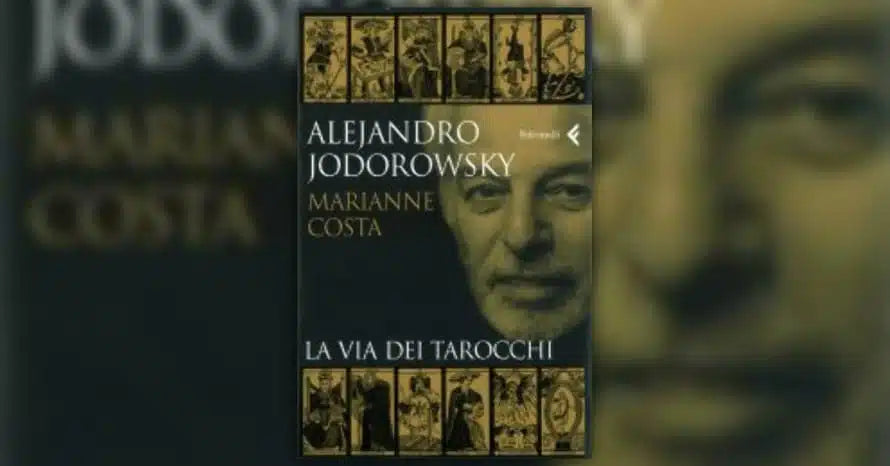
Understanding Tarot: The Path of Tarot by Alejandro Jodorowsky
Share
Anyone who is interested in deepening their knowledge of the Tarot, sooner or later will come across Alejandro Jodorowsky .
Over the years, the Chilean director and writer has become a point of reference for those seeking to deepen their knowledge on this subject.
We like to remind ourselves that the Tarot is not just a system of divination used by strange women at amusement parks, nor is it simply a card game or entertainment for the gullible. The Tarot is an ancient tradition, a book written in images, a collection of ancient knowledge that functions as archetypes. Those who can keep an open mind and not blind themselves, especially those of the mind, rejecting certain tools of knowledge simply because they are unscientific, will find reliable help in the book " The Way of the Tarot ," by Alejandro Jodorowsky, published by Feltrinelli Editore.
This important essay was written by the Chilean director with the help of his wife, Marianne Costa. The work done by the two authors is truly impressive: a wonderful historical reconstruction of the The Tarot of Marseille , in the version reconstructed by Philippe Camoin and Jodorowsky himself. The proposed interpretation of the 78 cards, divided into the Major Arcana and Minor Arcana, is extremely interesting and thorough. The two authors have worked tirelessly to research, analyze, and compare the various representations of the various types of known decks. Another very special merit of this essay is its connection between the Tarot and Numerology. This is an attempt that not many have dared to make, and, more importantly, very few have succeeded in achieving significant results.
Marianne Costa, who has starred in a television program about Tarot, gave an interview to Filippo Losito in which she explains some themes that help us better understand her approach to Tarot. "Tarot was conceived in the 15th century as a humble game, based on structure and symbols, with the ambition of representing the entire world: the inner and outer, the microcosm and the macrocosm. All the possibilities for human beings to journey toward themselves throughout their existence. We can consider Tarot as a kind of alphabet of destiny and use it as a sacred game, where randomly chosen cards offer us a message about ourselves.
[…] Initially, the Tarot trumps are allegories, mostly drawn from the Christian world of the Renaissance. They are therefore figures belonging to history, to humanity, like sacred places (cathedrals, temples, rivers, mountains, etc.), like the great heroes of mythology.
The word "archetype," according to Jung's definition, indicates an ancient model, born before us, which precedes us and will outlive us. For this reason, we cannot reduce it to our small "ego." In the shamanic world, archetypes are addressed as ancestors; for example, the moon is called "Grandmother Moon." This notion of an ancient model, which loves us and offers us a broader and more loving perspective, is a space of safety and relaxation, which allows the Self to access its own wisdom, just as a child can learn and develop under the benevolent gaze of a grandfather or grandmother.
It is a unique and precious space.” It is clear that the great tarot reader, now Jodorowsky's ex-wife, and co-author of the essay we present to you, uses the Tarot not for divination but as a mirror of the soul. A way to get to know oneself. A sort of psychoanalysis not intended to be translated into rational thoughts.
This is The Way of the Tarot , proposed by the two authors. This is their fundamental approach to this tool. While we invite you to read this important essay, we leave you with the always provocative, yet never banal, words of Alejandro Jodorowsky, who, in an interview with a well-known newspaper about The Way of the Tarot, replied:
The person who reads tarot cards intends to help, as a counselor, someone who is having trouble making choices. Should I act or not? Why am I suffering or unhappy? Why can't I find a man or a woman? And so, one studies the past, uncovers the traps that have been strewn throughout our lives, and analyzes the family tree. Tarot cards are a sort of problem detector. And not a therapy. Therapy is psychomagic, which doesn't replace psychoanalysis, but teaches us much better how to be happy, also saving a lot of time and money. Those who read tarot cards are not psychologists, and tarot cards do not represent a divinatory art, but rather, like the I Ching, an art of consulting problems. We are potentially unlimited beings, therefore our current identity is a limitation: if happy, it must be maintained; if a source of unhappiness, it must be modified. In any case, it comes from the past, which is always a source of trauma. All we have is not the future, but the present that can serve us, if we want it, to change and dissolve the limits (genetic, familial, social...) of the past. Psychomagic works on this. And the tarot, a high-level instrument – a bit like a Stradivarius violin – reconnects us to the present."
